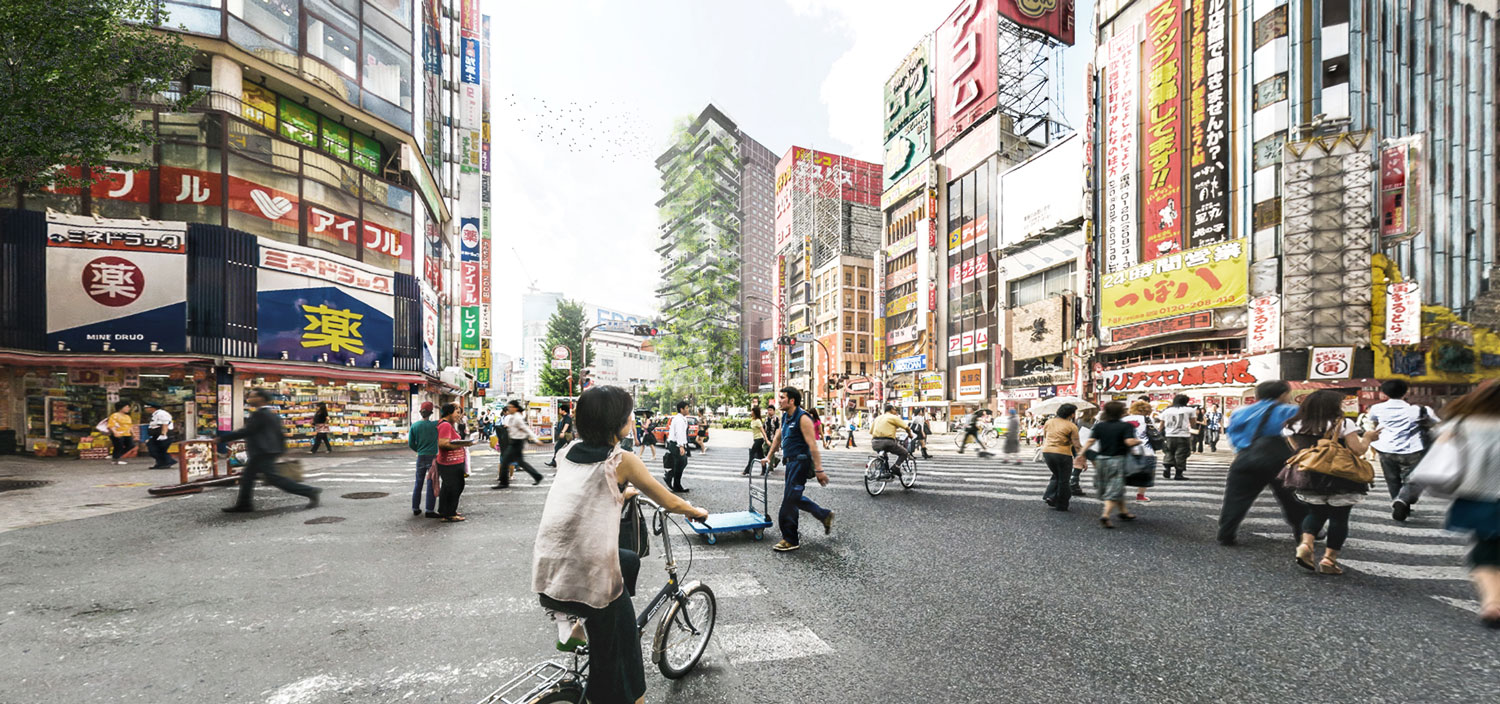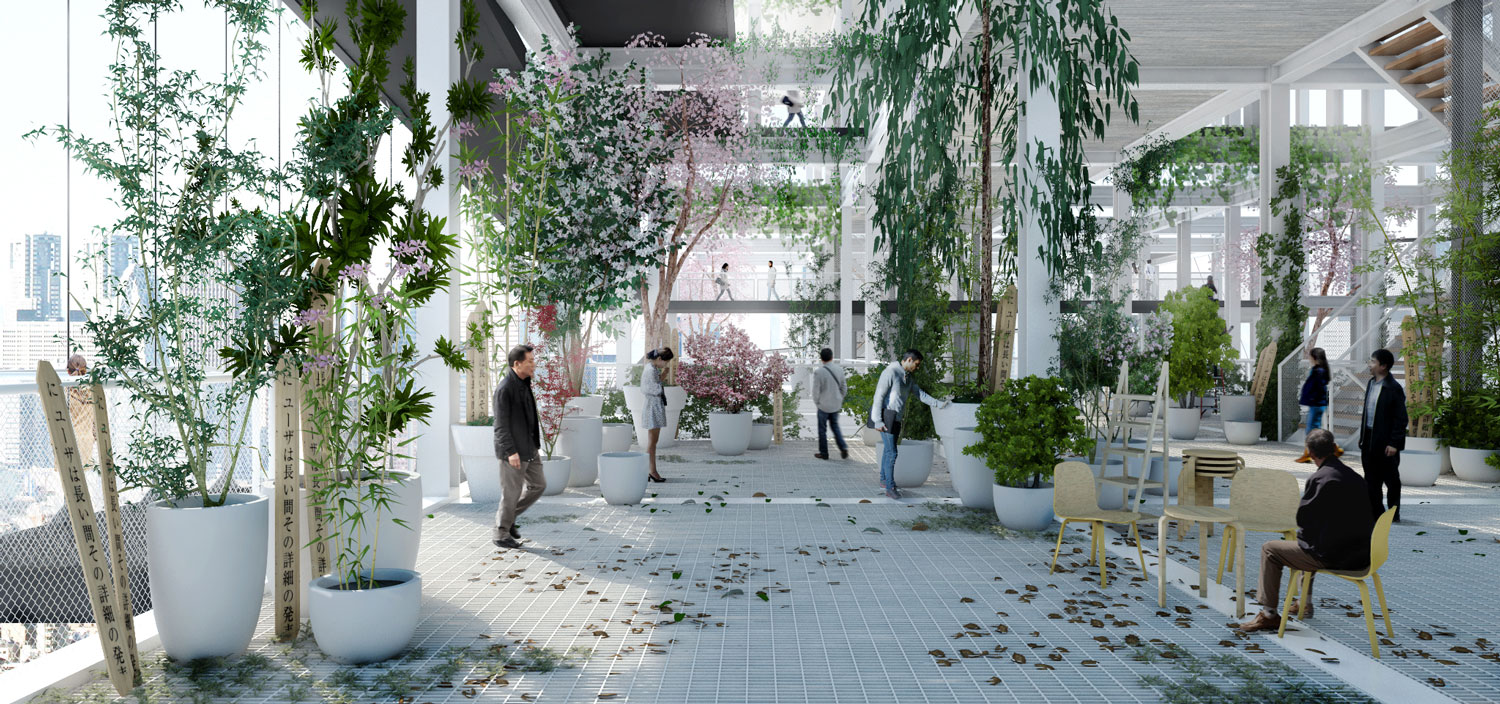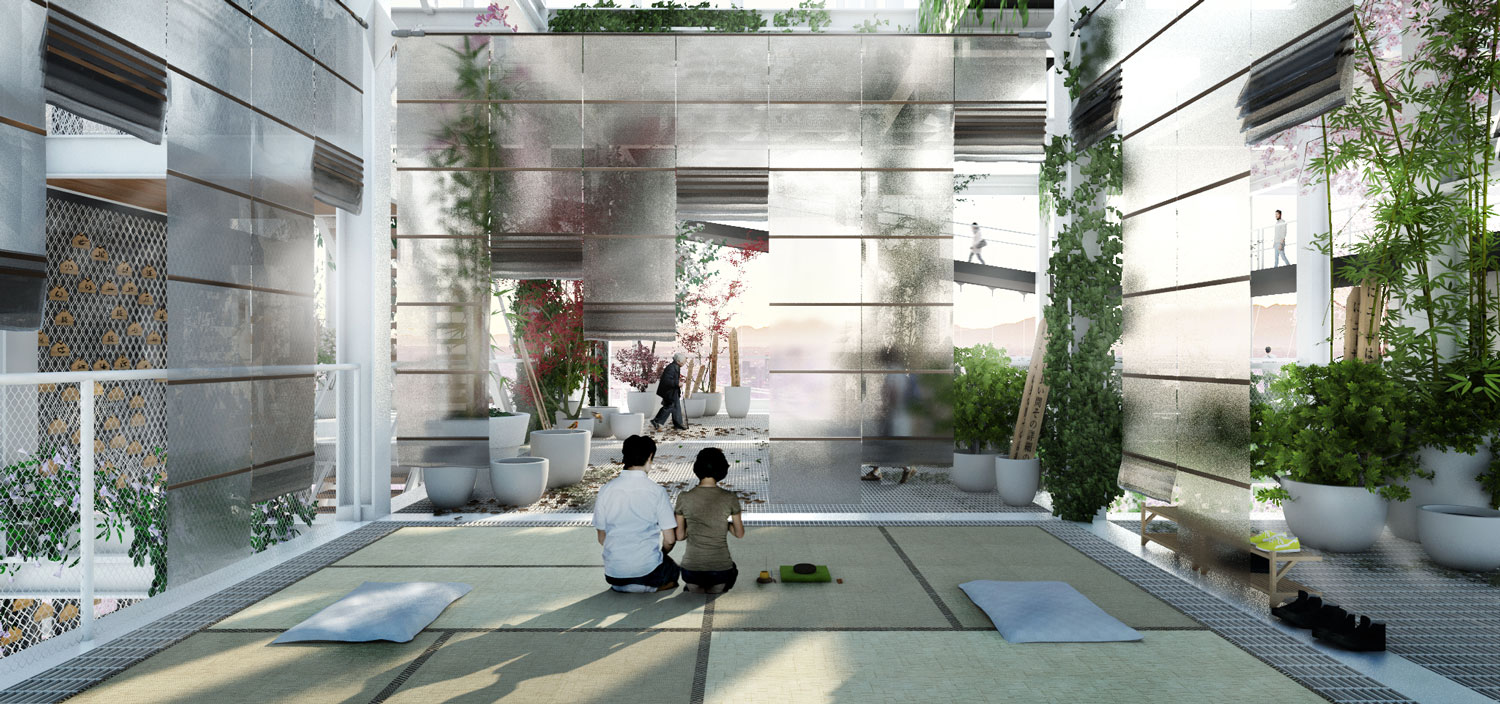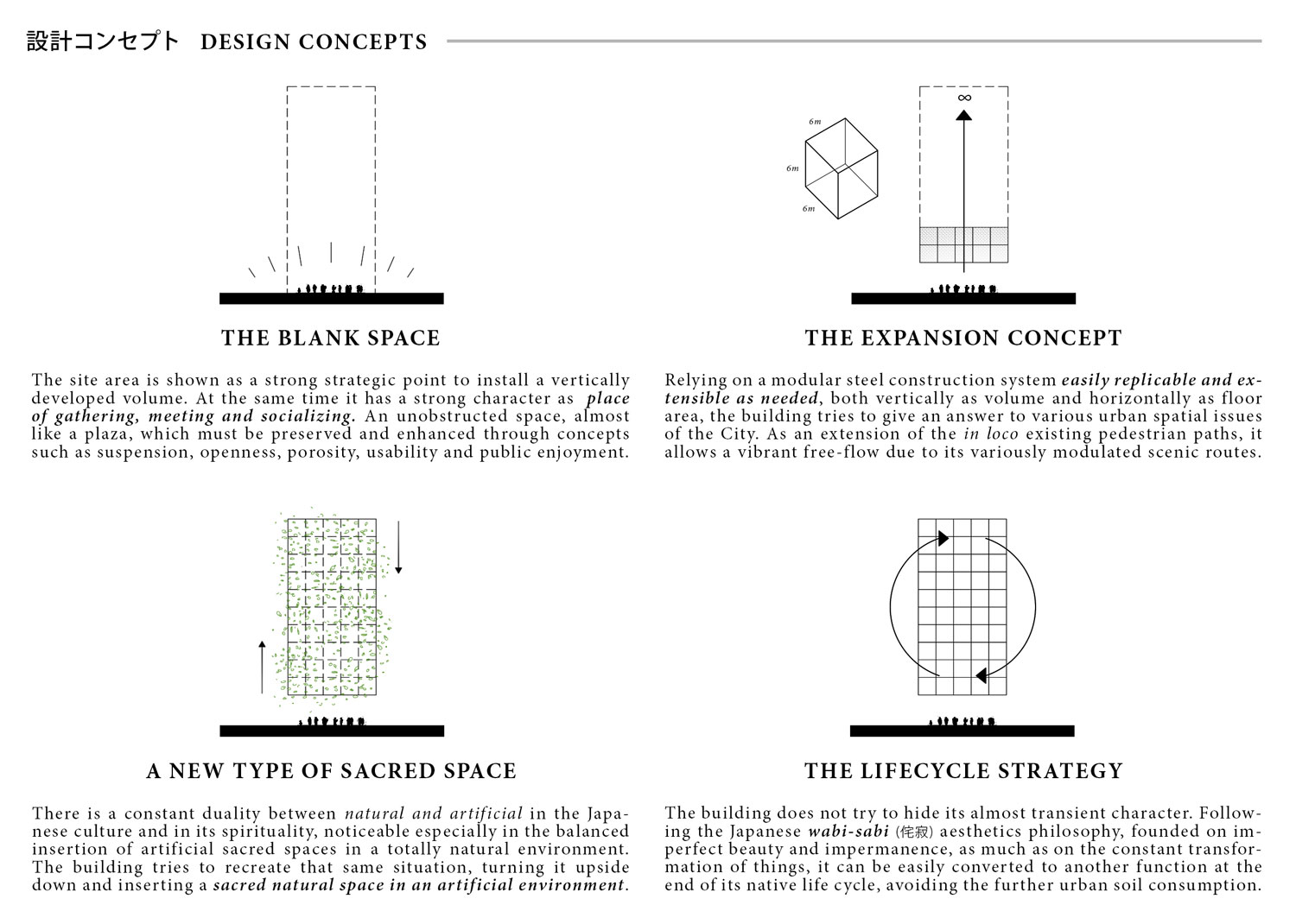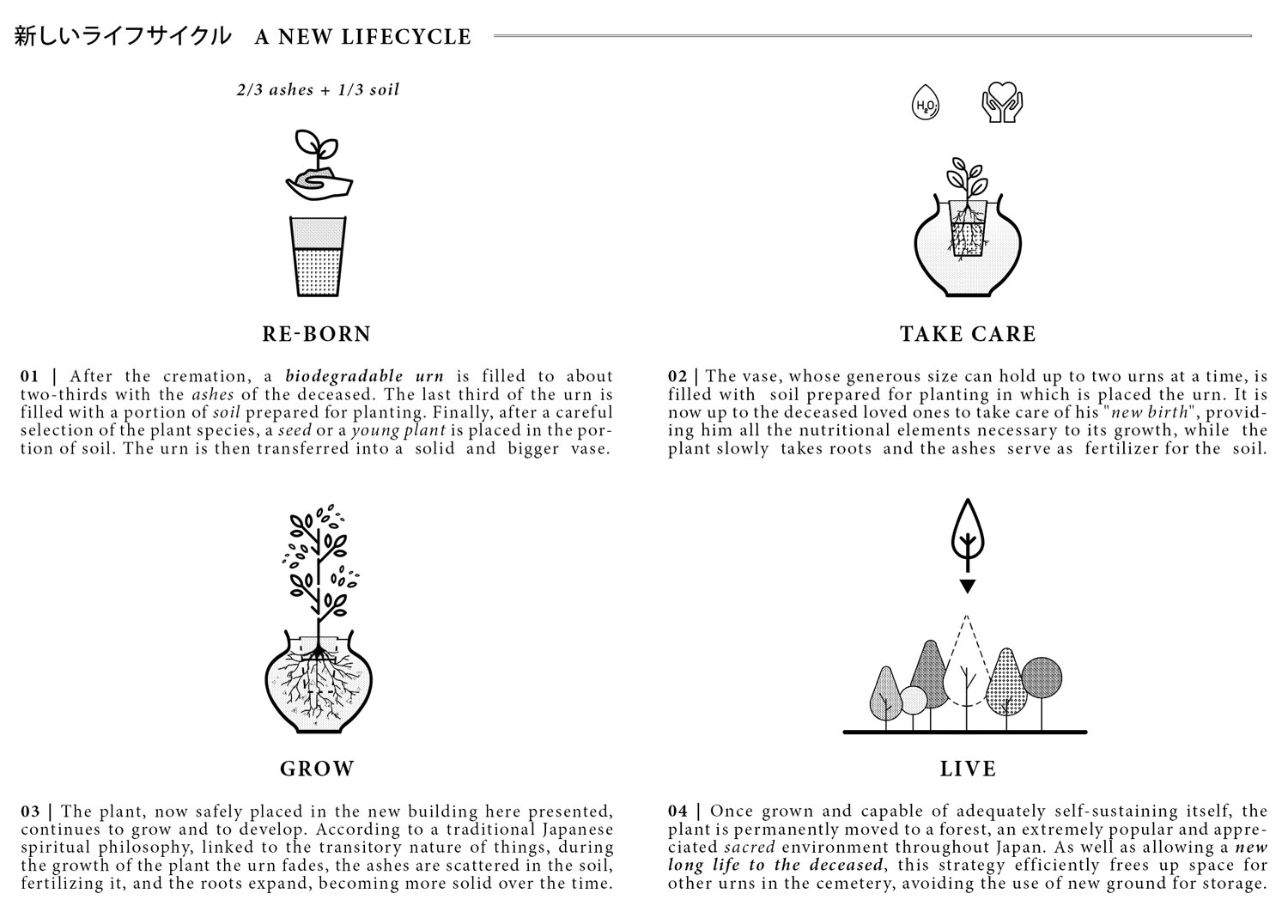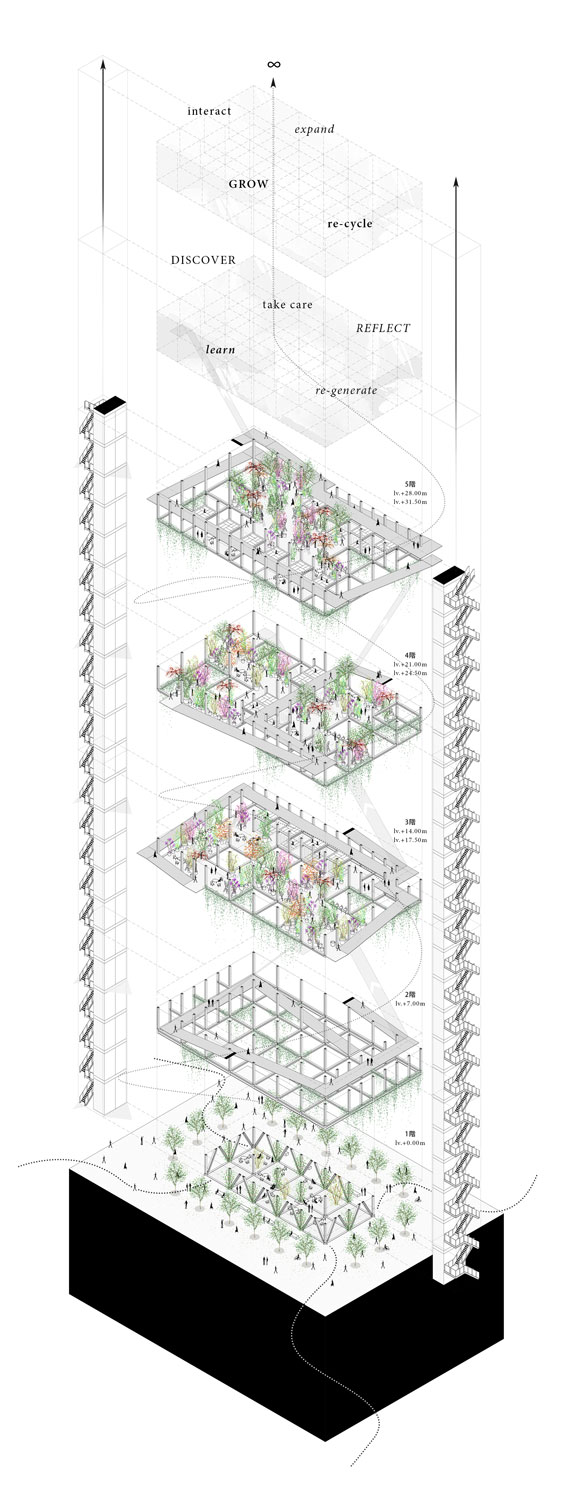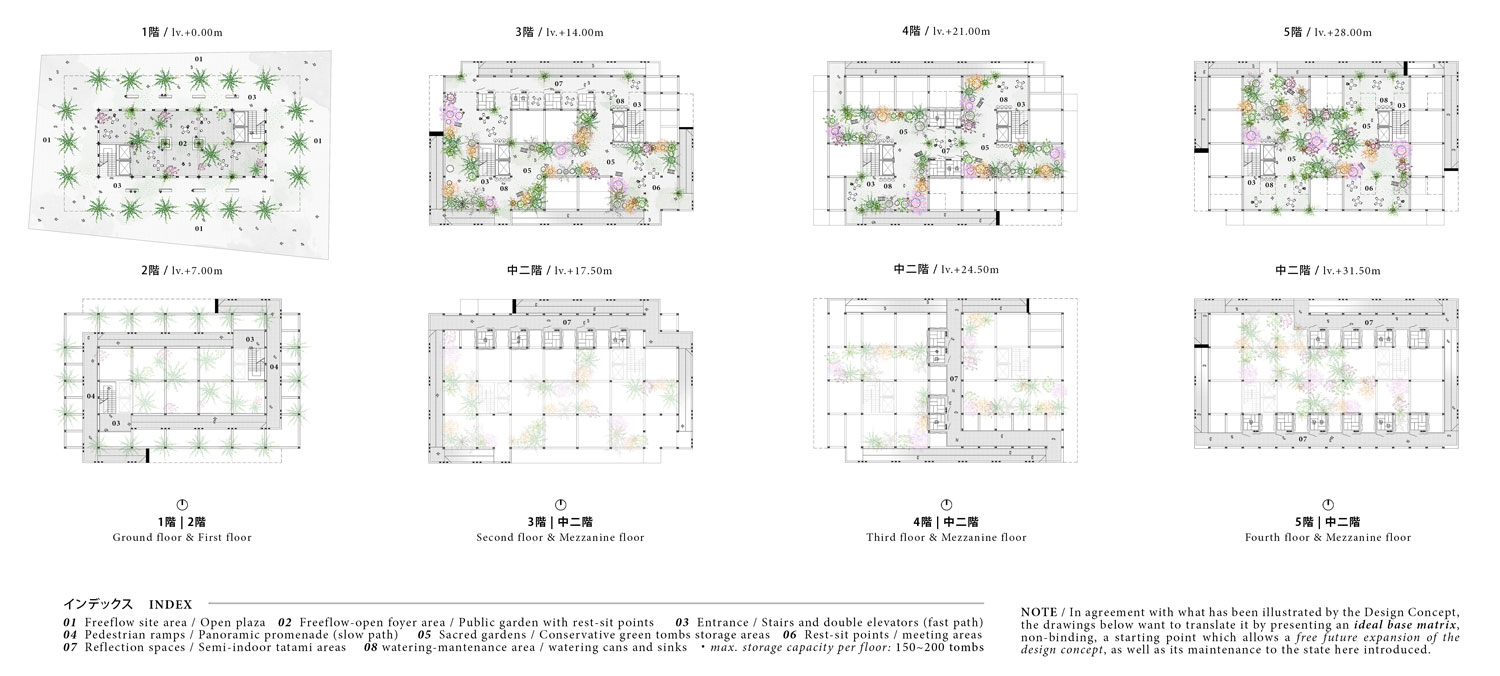1973-ECH-TYO.JP-2016
Client: Unknown
Status: Competition (2016)
Location: Tokyo, Japan
Coordinates: 35.6939338, 139.7003463
Climate: Humid subtropical, Temperate
Material: Metal
Environment: Urban
Visualizer: Studio
Scale: Large
Types: Cemetery, Religious
Hanami, literally «enjoy the bloom,» is a Japanese term that tells a story of delicacy, transience and fragility, but at the same time also speaks of beauty, of great joy, of lushness of life and mostof all of rebirth. More than any other, this ancient traditional practice survived through the ages, makes clear and enhance the intimate and sacred relationship that exists between man and nature. A concept extremely important in Japanese culture that recalls the whole human ancestral history, experienced at a spiritual and totally personal level. This great sensibility for life is inextricably connected to an awareness of death that is never perceived as a final and definitive stage, but rather as a time of transformation and regeneration, beyond any possible religious beliefs.
For this reason the natural world perfectly embodies this concept of transience, especially supported by peculiar aesthetic philosophies such as wabi-sabi (侘寂) and mono no aware (物の哀 れ), which if on the one hand they emphasize the impermanence of things on the other confirm how those same things, once ended their lifecycle, they become even more precious, more beautiful and more full of meaning in their wonderful and natural imperfection.
These values do not only exist in so-called sacred places, full of history and traditions, but also in the every day life of big avant-garde cities such as Tokyo itself. In this totally artificial environment, in which the living space not only for nature but also for the man himself is now almost non-existent, the real challenge is to create a place that can summarize all of these concepts. This means being aware that life and death are two sides of the same coin -the existence- and the permanence of a human being, with all its natural fragility, it can be of inspiration to the conception of new urban and spatial strategies which take account from the very beginning of the possible future life of a building, in this case.
The project here proposed attempts to take charge of all of these concepts, trying to give an answer to these critical challenges. Taking full advantage of the duality between natural and artificial it aims to analyze and re-invent the subject of the cemetery through the tradition of the place, literally “watching” it from a new perspective. Not only it offers an innovative vertical modular expansion system, but using a valuable compositive and constructive strategy it aims at promoting a fluid, continuous and potentially endless process of regeneration that is spatial, functional and urban at the same time. This results in the use of a very special funeral system with an high symbolic value which reincarnates in itself all the principles and spiritual values already explained, especially the continuous flow of the life cycle of a living being. Allowing the deceased, after the inevitable cremation, to experience a new lifecycle which literally return him to nature, this system gives real vibrant life to the city that hosts it.
The cemetery, defying every stereotype and gaining again from the Japanese tradition, becomes an interactive structure, a park and a temple and an intimate sacred and public place at the same time. A place to see grow and bloom life, once again.
The blank space
The site area is shown as a strong strategic point to install a vertically developed volume. At the same time it has a strong character as place of gathering, meeting and socializing. An unobstructed space, almost like a plaza, which must be preserved and enhanced through concepts such as suspension, openness, porosity, usability and public enjoyment.
The expansion concept
Relying on a modular steel construction system easily replicable and extensible as needed, both vertically as volume and horizontally as floor area, the building tries to give an answer to various urban spatial issues of the City. As an extension of the in loco existing pedestrian paths, it allows a vibrant free-flow due to its variously modulated scenic routes.
A new type of sacred space
There is a constant duality between natural and artificial in the Japanese culture and in its spirituality, noticeable especially in the balanced insertion of artificial sacred spaces in a totally natural environment. The building tries to recreate that same situation, turning it upside down and inserting a sacred natural space in an artificial environment.
The lifecycle strategy
The building does not try to hide its almost transient character. Following the Japanese wabi-sabi (侘寂) aesthetics philosophy, founded on imperfect beauty and impermanence, as much as on the constant transformation of things, it can be easily converted to another function at the end of its native life cycle, avoiding the further urban soil consumption.
A new lifecycle
Re-born
After the cremation, a biodegradable urn is filled to about two-thirds with the ashes of the deceased. The last third of the urn is filled with a portion of soil prepared for planting. Finally, after a careful selection of the plant species, a seed or a young plant is placed in the portion of soil. The urn is then transferred into a solid and bigger vase.
Take care
The vase, whose generous size can hold up to two urns at a time, is filled with soil prepared for planting in which is placed the urn. It is now up to the deceased loved ones to take care of his «new birth», providing him all the nutritional elements necessary to its growth, while the plant slowly takes roots and the ashes serve as fertilizer for the soil.
Grow
The plant, now safely placed in the new building here presented, continues to grow and to develop. According to a traditional Japanese spiritual philosophy, linked to the transitory nature of things, during the growth of the plant the urn fades, the ashes are scattered in the soil, fertilizing it, and the roots expand, becoming more solid over the time.
Live
Once grown and capable of adequately self-sustaining itself, the plant is permanently moved to a forest, an extremely popular and appreciated sacred environment throughout Japan. As well as allowing a new long life to the deceased, this strategy efficiently frees up space for other urns in the cemetery, avoiding the use of new ground for storage.
